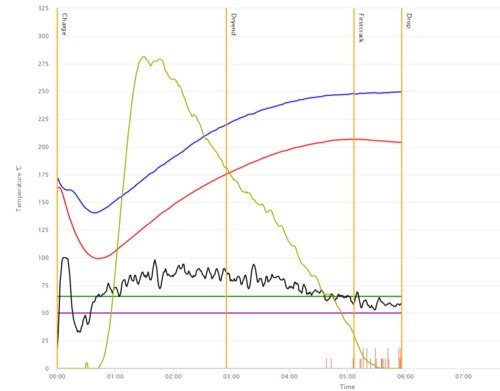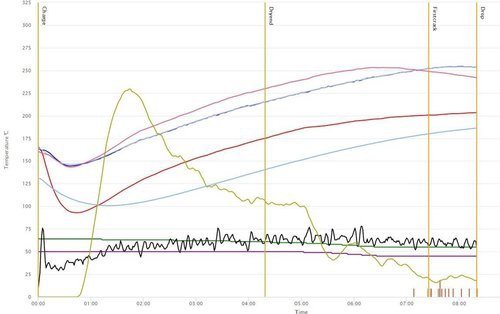How to select and buy green coffee beans
Despite the name, green coffee beans aren’t actually beans, but raw seeds from the coffee cherry. All of the coffee’s flavor potential is held within this green seed and is unleashed during the roast. This is when the beans change to their familiar brown color.
While green beans give you the opportunity to tweak the roast and flavor to your liking, you will not achieve a delicious roast unless these beans are carefully selected. The type and quality of the beans can easily determine whether it will be a tasty or a terrible cup.
There are several factors that contribute to the overall green coffee bean quality. Therefore, it’s essential to recognize each factor from the very beginning - when you’re selecting and purchasing.
Selecting the right green beans for you
There are numerous types of green coffee beans, and the differences between them affect both how the coffee tastes and how you should roast them. So if you’re not sure which green beans to select and want to find something to your liking - here’s what you need to consider:
Origin
Where do the green beans come from and at which farm did they grow? There are two reasons why you should know the answer to this. Firstly, each place will have different conditions, including soil, humidity and climate, which will have a big impact on the flavor and aroma of the coffee. Therefore, we suggest trying coffee from different countries and regions to compare in order to find a suitable coffee for you.
Secondly, being able to see which farm the coffee was grown at is usually a sign of a good quality batch. At times the packaging will only state the sub-region, meaning the green beans are most likely not from a single farm. We would not recommend buying these if you value unique characteristics and want the best quality.
Photo: Sucafina.
Altitude
Another key factor to consider is the altitude of where the green beans are grown. Generally, higher altitudes means lower temperatures. This leads to a slower growth - allowing the sugars to develop more. How does this affect the flavor? Well, the beans can gain more complex taste profiles, sweetness, and typically more acidity compared to those grown at warmer temperatures.
Processing
Processing refers to how the coffee seeds are removed from the fruit, and the chosen type of processing will have an incredible influence on the final taste of the coffee. So if you want to find a coffee to your liking, take a look at how the green beans were processed and choose one which produces a flavor profile that sounds good to you.
The two most popular methods are:
Natural (or dry) processing - involves drying out the entire freshly picked coffee cherry with the seed still inside, usually on raised beds in the sun. This method produces heavy-bodied, sweet, smooth and complex coffees.
Washed (or wet) processing - the seed is removed from the fruit before drying, which produces coffees that are cleaner, brighter, fruitier and more acidic.
An old tradition
Natural processing is considered a traditional method, which originated in places with limited access to clean water. Nowadays, it’s a much preferred method due to the flavor possibilities it yields.
Photo: Long Miles Coffee.
Appearance
You will need to ensure that the coffee beans are relatively uniform. The beans are normally sorted beforehand, however, if you buy coffee directly from farmers, the quality can often be quite inconsistent. You want to make sure that the green beans are similar in size and color. Why? The same color means they have been treated and ripened in similar ways - making them reach the same level of roast simultaneously. While beans of equivalent size will roast at the same speed. Therefore, selecting uniform green beans is important to achieve repeatable and consistent roasts.
Coffee importer Condesa continually check the health and quality of the green beans throughout the whole purchase process. Photo: Condesa Co.Lab.
Ethical Coffee
Despite the fast-growing coffee industry, many of the hardworking coffee farmers remain underpaid and lack the safety equipment needed. This is why it’s essential to buy ethical coffee in order to protect the rights of coffee farmers.
Hence, if you do not have the ability to buy directly from farmers, we suggest selecting importers with a reputation for sourcing beans in a way that is fair to the workers and doesn’t harm the environment. The importer should be committed to transparency and provide full traceability of the green coffee.
“Ask the hard questions - ask your importers about who else is involved in the value chain, who received what percentage of the price you pay, ask them about farming practices and conservation efforts - these things matter!”
- Katja Klein, Founder of Kontext Coffee Company
Try a range of different coffees and take notes on each one to develop an idea about which coffees you prefer. Photo: Nordic Approach.
So where can you buy green beans?
Online retailers
Purchasing green beans online is easy and provides a varied range of green beans from all over the world. Have you tried Sweet Maria’s? They have a huge selection of green beans available in an extensive array of flavors, profiles, processing methods and bean types.
Importers
Need green beans for your coffee shop or roastery? Then a common practice would be to purchase from importers, who usually have a larger network and financial means to buy various green beans in large quantities. Importers will provide information about each producer they are working with, and have all the resources to handle bulk logistics and international duties - making the process more seamless for the buyer.
Currently looking for a reliable importer offering high quality green beans? Then we have some suggestions for you. Click to read more about them, check out their offer list and try their roasting profiles:
Get inspired by ROEST roasting profiles
Roasting profile 1 - Sucafina Profile Washed
Suitable for Kenya, China, Ethiopia Washed, Colombia Washed, Indonesia Wet-Hulled also Uganda Natural.
Roasting profile 2 - Condesa Brazil Natural “Low and Slow”
The profile works well for natural and more experimental processes with challenge of lower density beans with dryer moisture and water activity readings.
Direct trade
If you want to take it further with no intermediaries such as importers, then it is possible to buy directly from producers. This leads to better traceability and transparency. You can visit the farm, establish a relationship with the workers, and spend time evaluating the coffee before buying. Arnold Ilves, Production Manager at Coffee People, provided us a great advice regarding this method:
“Get some samples from a green coffee seller. If you see what you like then check where the farm is located and go visit the region for a couple of weeks. Try to make contacts there to find out where to buy more coffee. We have tried it. It works! It will make a hell of an adventure as well.”
- Arnold Ilves, production manager at Coffee People








